Machines in the Collection
Calculators
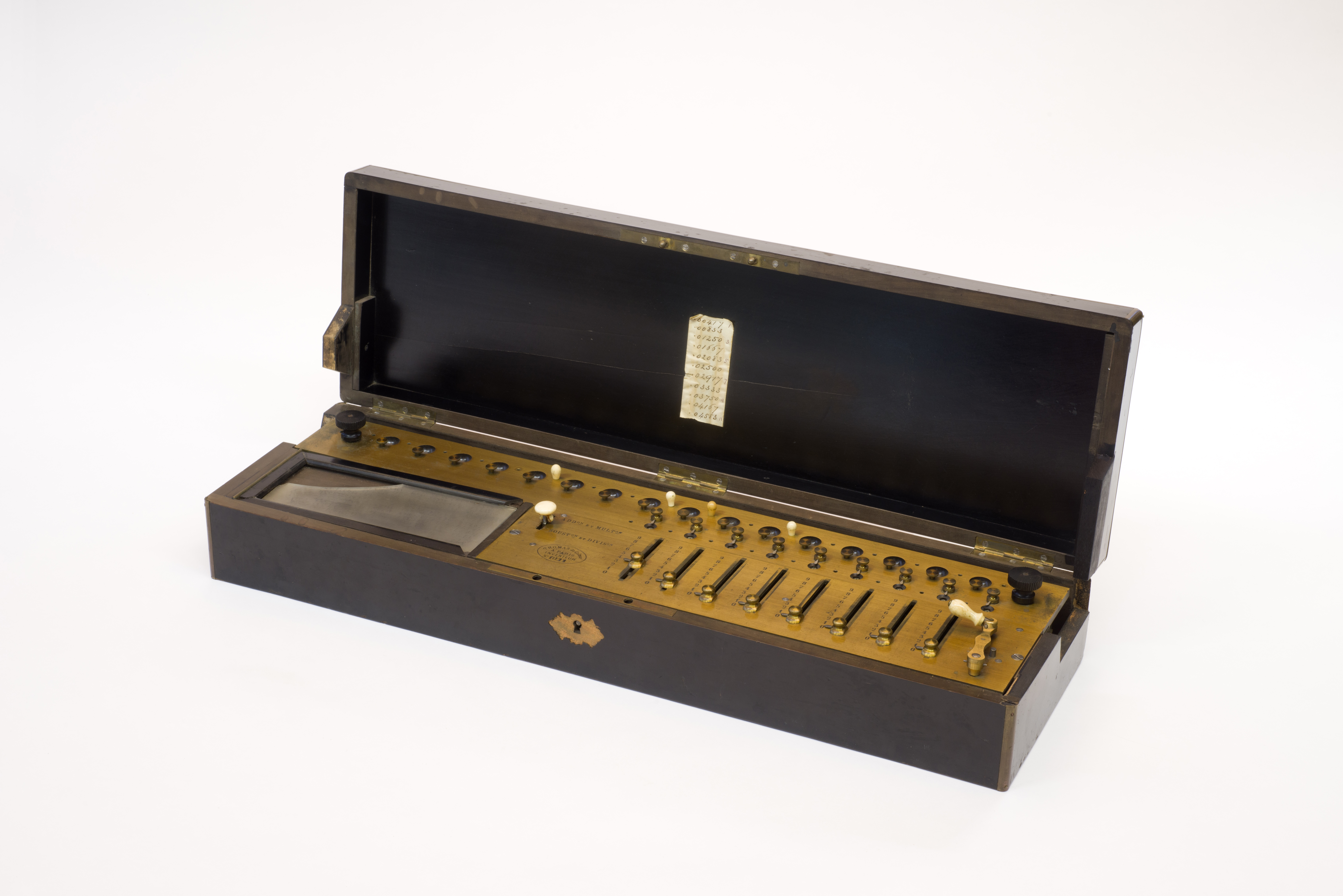
c.1870s
Reference no. 2013.0112.00024
This Arithmometer was invented and patented by Charles Xavier Thomas de Colmar (1785-1870).[1] His mechanical calculator was exhibited Paris Exposition of 1867 and performed simple multiplication and division.[2] In around 1872 Thomas de Colmar’s became the first to manufacture over 1000 calculating machines. This one is marked as no. 1022, and so was likely produced in the early to mid-1870s.[3]
To operate the Arithmometer, numbers are input by setting dials across the interface and then the crank is turned to produce an answer. In 1878, Professor W. Stanley Jevons of the Royal Society wrote of the Arithmometer:
The amount of time saved will vary with the character of the operation and the nature of the calculations; but about the saving of mental exertion there can be no possible doubt. Jevons, W. Stanley. 'Remarks on the Statistical Use of the Arithmometer.' Journal of the Statistical Society of London 41, no. 4 (1878): 598.
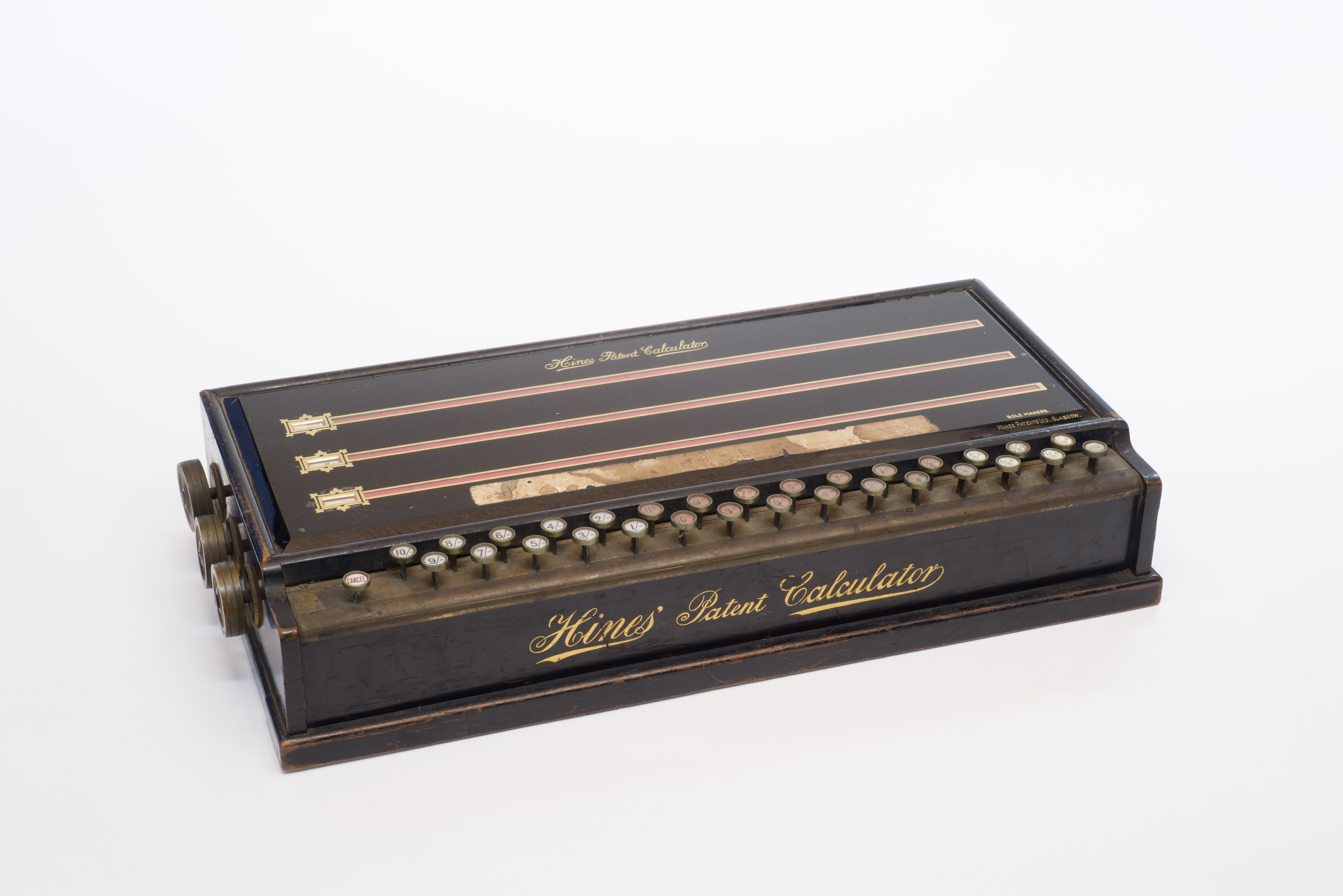
This machine was designed for calculating prices by multiplying units of weight by price and quantity. A similar example is held in the British Science Museum.
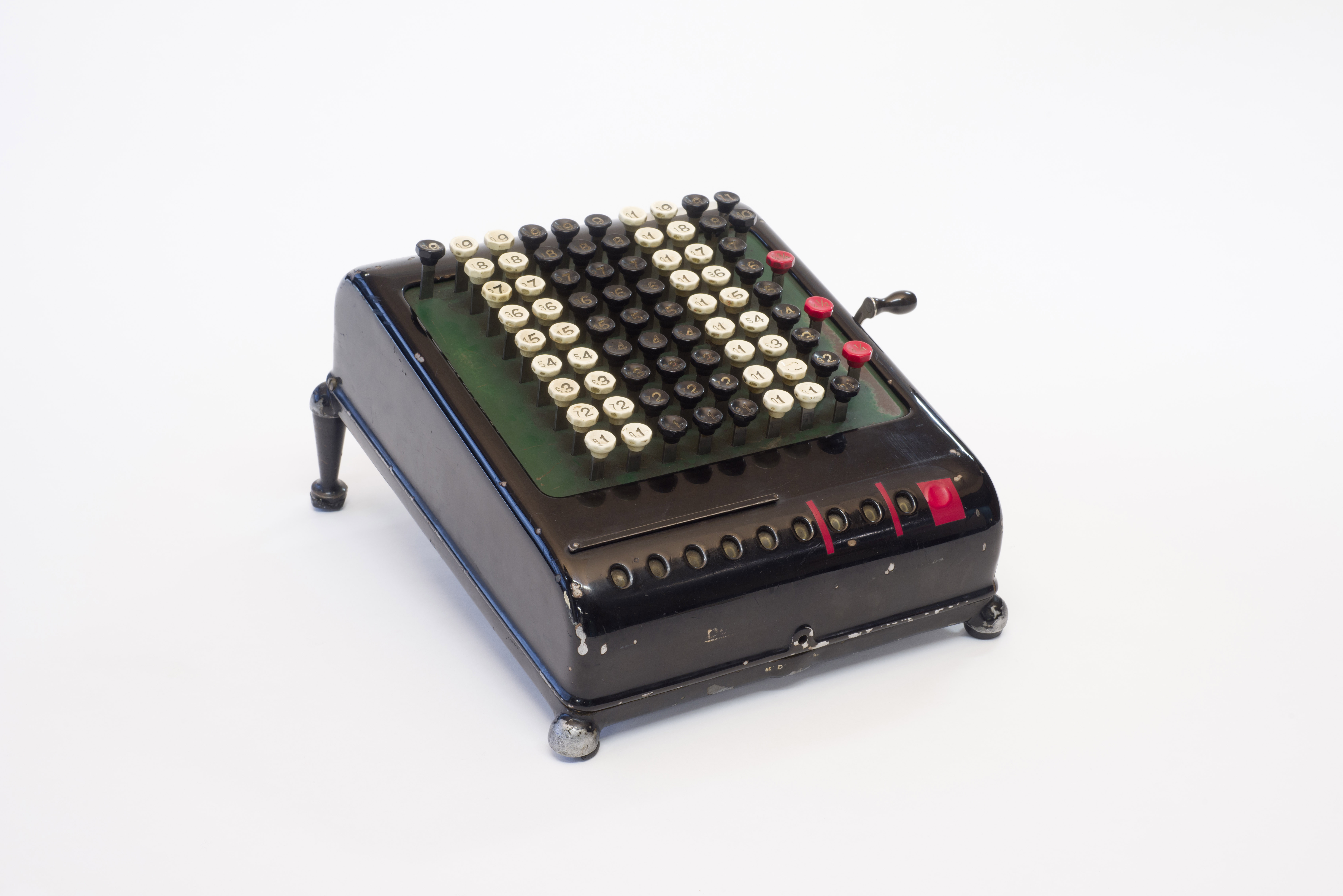
c.1920s
Reference no. 2013.0112.00008
Burroughs Adding Machine Company, previously called American Arithmometer Corporation until 1904 when it was renamed after its founder,[5] made mechanical calculators from 1886[6] until the late 1920s when they made their first foray into electronic calculation machines. During interwar period Burroughs was a top supplier of calculation machines.[7]
This machine is very similar to the Comptometer produced by the Felt and Tarrant Company. So similar, in fact, Felt and Tarrant sued Burroughs for copying their patented metal case design.[8] See records of the litigation correspondence.
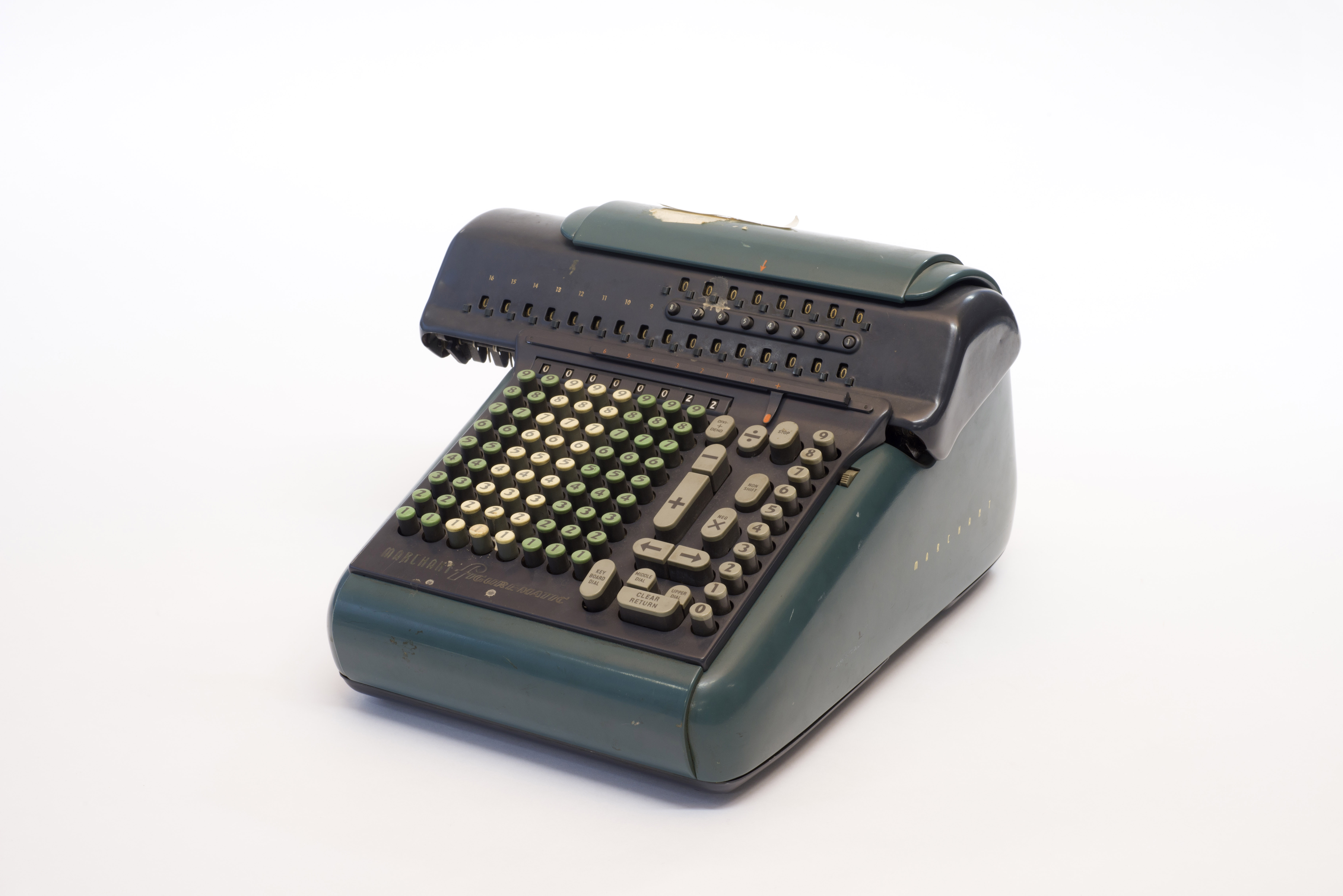
1953
Reference no. 2013.0112.00022
Made in the USA, this machine is a Marchant Figurematic, most likely model 8DRX. It is an early electronic calculator with an internal motor made by General electrics. A similar machine is held in the Smithsonian National Museum of American History.
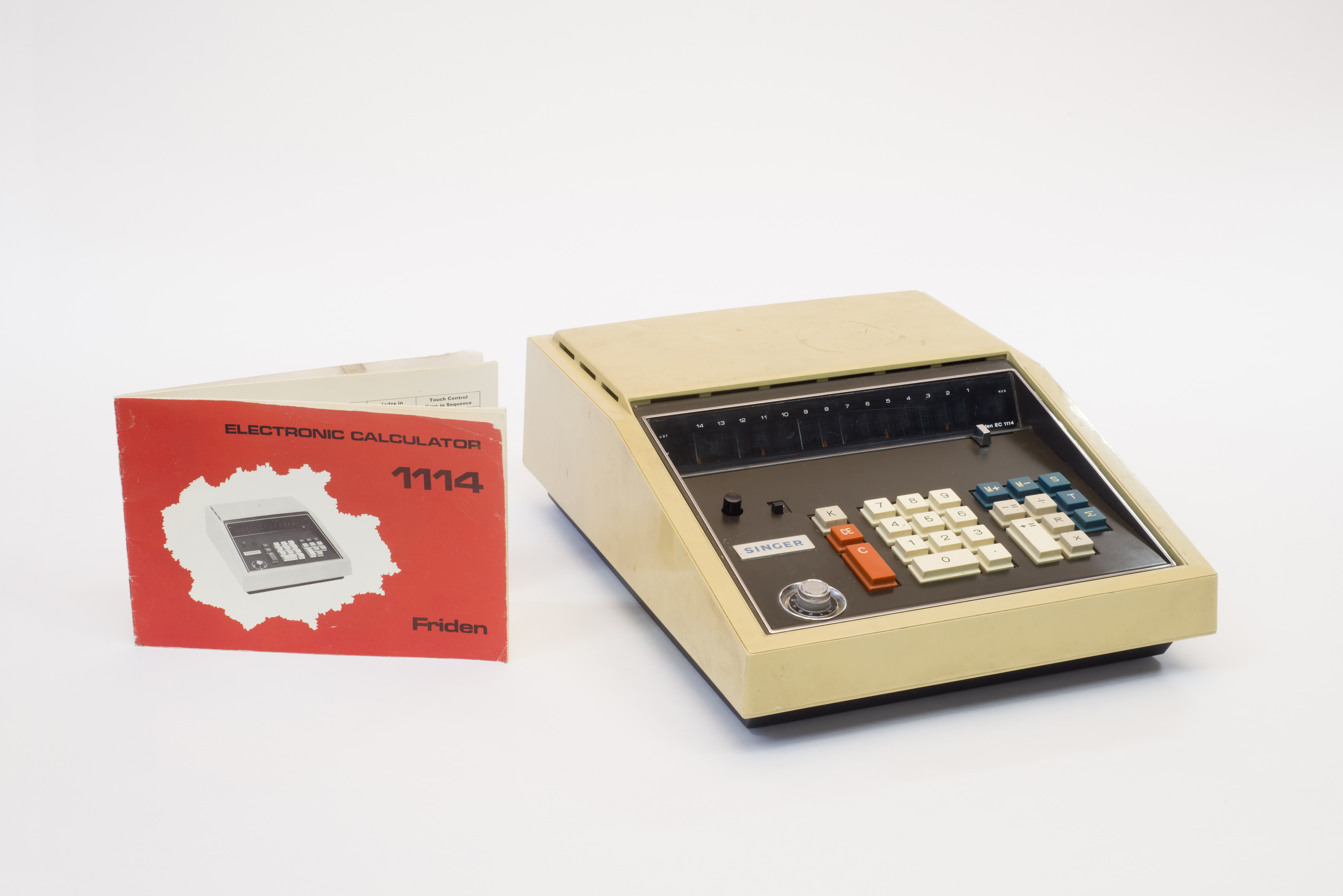
Late 1960s to early 1970s
Reference no. 2013.0112.00009
Unlike the previous calculators above, this Singer-Friden electronic calculator features a digital light-up display of up to 14 digits. This model was made in Japan, most likely in the late 1960s. The instruction booklet has survived.
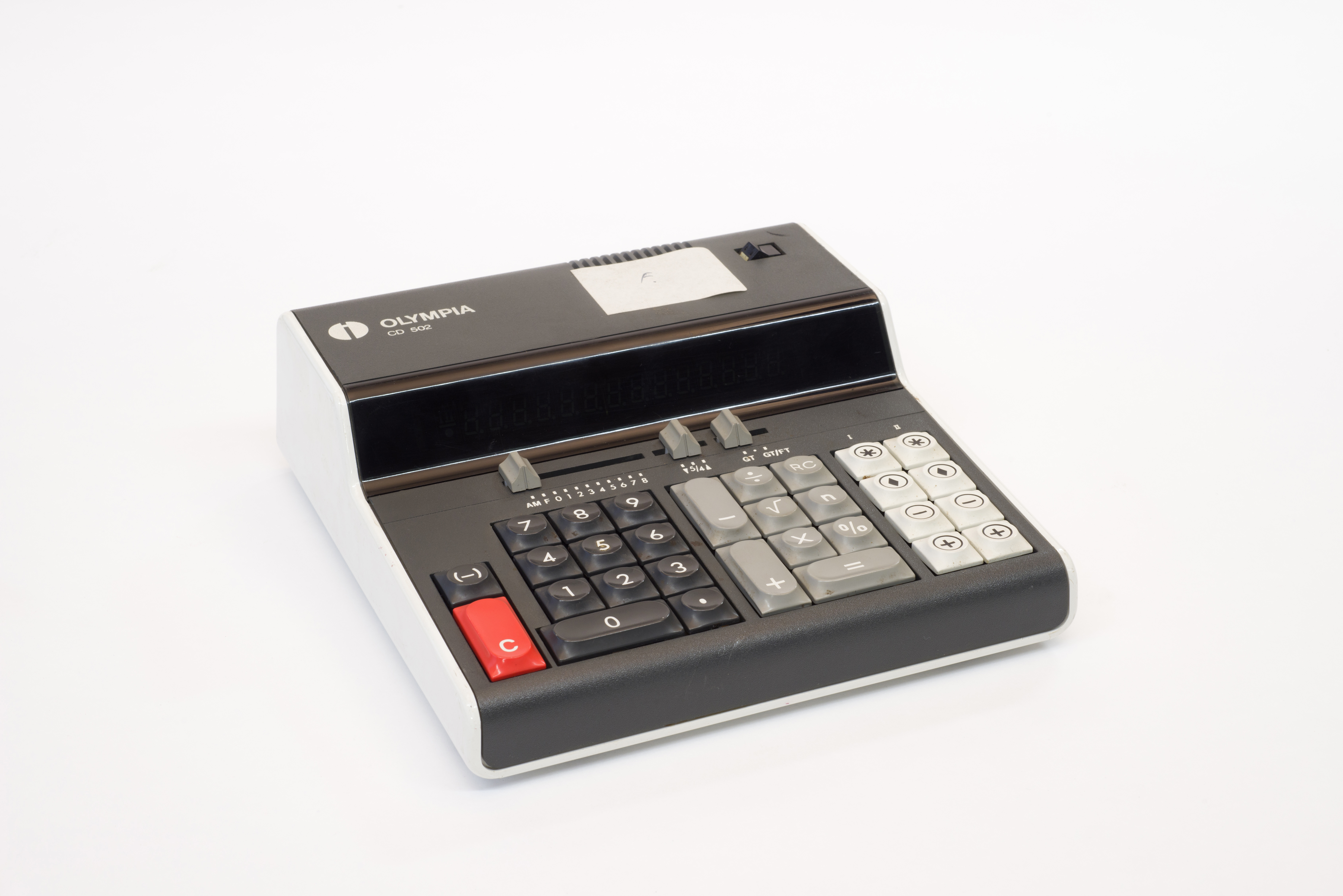
CALCULATOR1975
Reference no. 2012.0112.00018
Other Machines
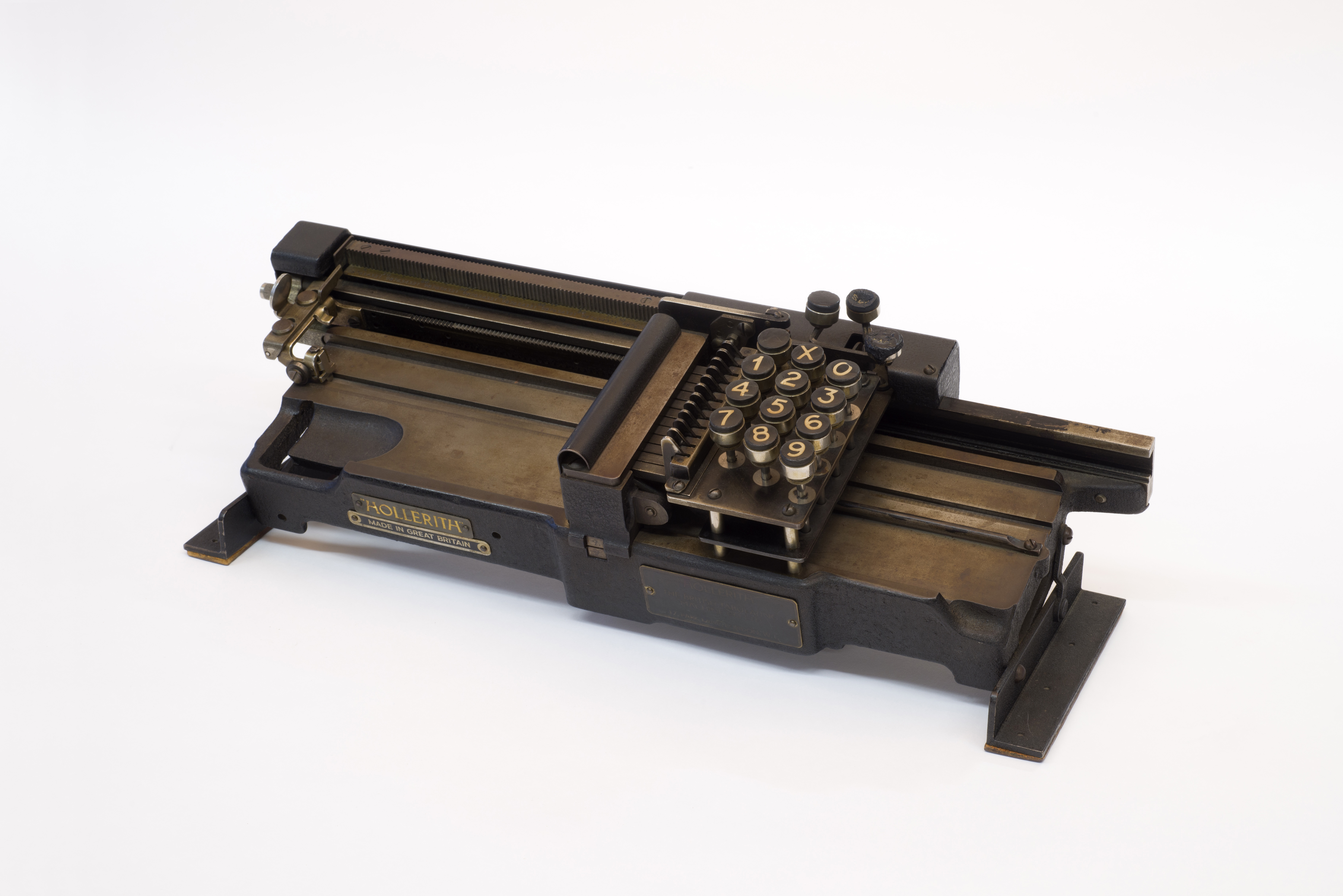
c. 1920
Reference no. 2013.0112.00007
Punch card systems were an early precursor to the modern computer. This machine was used to punch holes into paper cards to record data. The cards could then be filed and read at a later date by a different machine to recall the information they held.
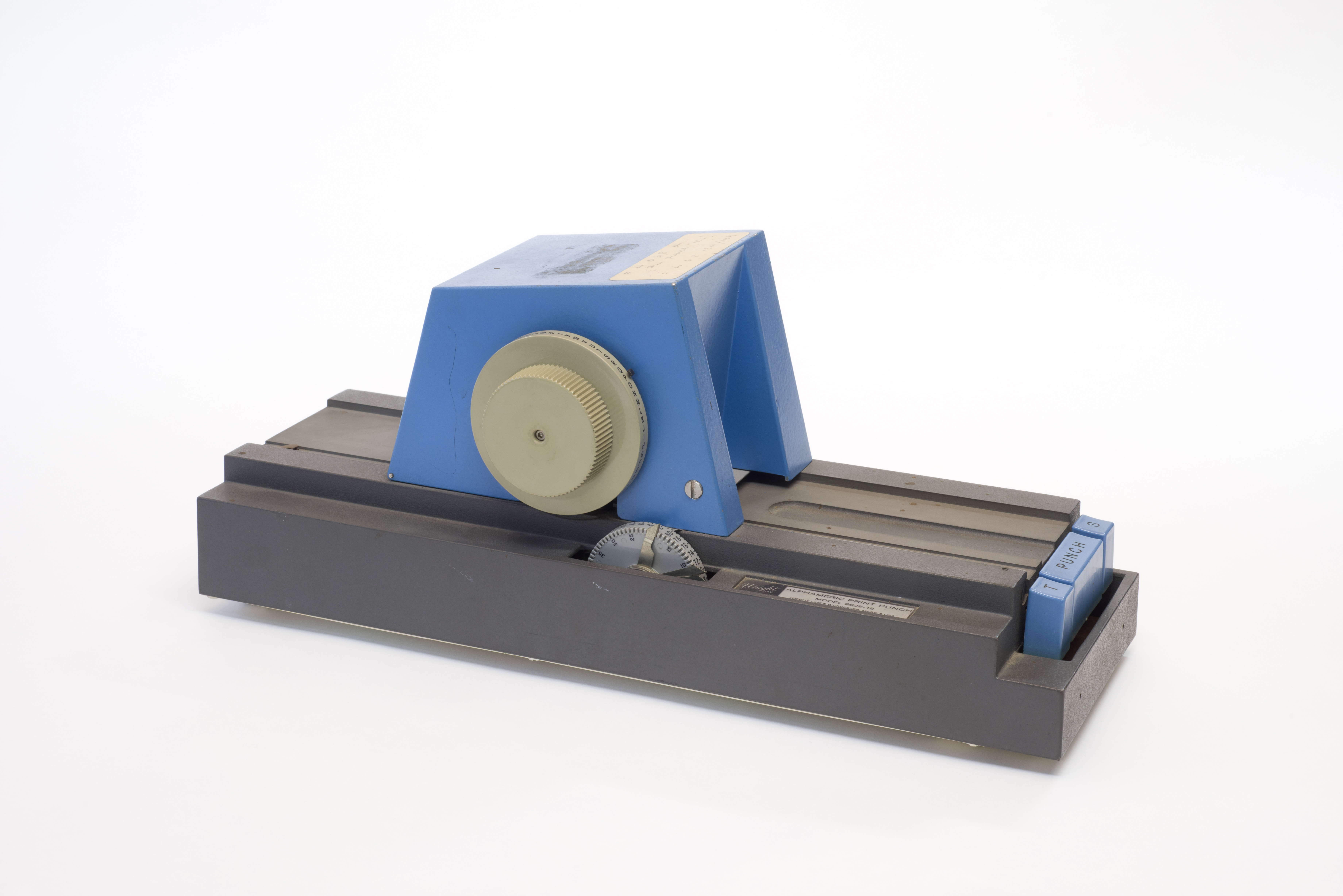
Date unknown
Reference no. 2013.0112.00006
Made in Worcester, Mass., USA. A later version of the Hollerith punch card system.

c.1960
Reference no. 2013.0112.00017
Using magnetic belt, this machine could record up to 14 minutes of audio. The dictator also had the ability to erase unwanted sections of the dictation and re-record onto the same tape.[9] The tape could then be sent to the typist who copy from the audio tape.
Footnotes
- Johnston, Stephen. ‘Making the arithmometer count.’ Scientific Instrument Society Bulletin (1997): 12-21.
- Jevons, W. Stanley. ‘Remarks on the Statistical Use of the Arithmometer.’ Journal of the Statistical Society of London 41, no. 4 (1878): 597-601.
- Martin, E. The Calculating Machines. Charles Babbage Institute (1992): 54.
- Jevons, W. Stanley. ‘Remarks on the Statistical Use of the Arithmometer.’ Journal of the Statistical Society of London 41, no. 4 (1878): 598..
- Cortada, James W. ‘Adding and Calculating Machines.’ Before the computer: IBM, NCR, Burroughs, and Remington Rand and the industry they created, 1865-1956. Princeton University Press (2000): 36.
- https://web.archive.org/web/20200212012624/http://home.ix.netcom.com/~hancockm/history_timeline.htm
- Cortada, James W. ‘Performance of the Burroughs Adding Machine Company.’ Before the computer: IBM, NCR, Burroughs, and Remington Rand and the industry they created, 1865-1956. Princeton University Press (2000): 174.
- Jones, Matthew L. ‘Epilogue.’ Reckoning with Matter: Calculating Machines, Innovation, and Thinking about Thinking from Pascal to Babbage. University of Chicago Press (2016): 245.
- https://web.archive.org/web/20180308151438/https://www-03.ibm.com/ibm/history/exhibits/modelb/modelb_office.html